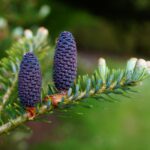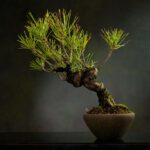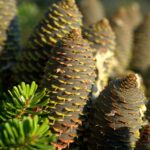Tips on How to Care for a Bradford Pear Tree Easily
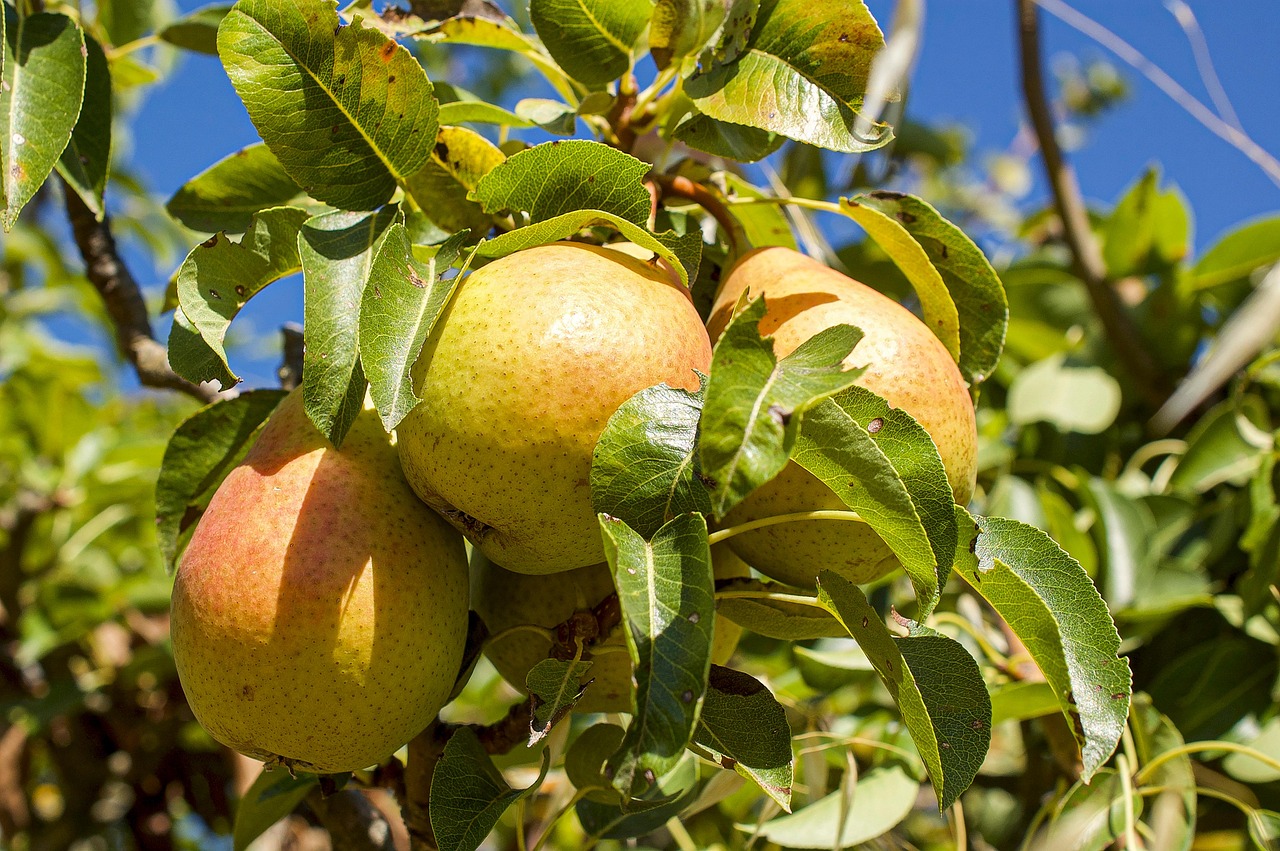
The Bradford pear tree, known for its spring blossoms and fall color, can be a nice addition to a landscape. However, proper Bradford pear tree care is important to keep it healthy and prevent issues. This guide offers straightforward advice for maintaining your Bradford pear, covering everything from planting and watering to pruning and dealing with common problems. We’ll also touch on when it might be time to consider other tree options.
Key Takeaways
- Bradford pear trees need regular pruning to maintain their structure and health, ideally done during the dormant season.
- When pruning, use clean, sharp tools and make cuts just above the branch collar to promote healing.
- Avoid over-pruning, often called topping, as it weakens the tree and can lead to poor branch growth.
- Consistent watering, especially when the tree is young or during dry spells, is vital for its survival.
- Be aware that Bradford pear trees can be prone to certain diseases and may spread invasively, sometimes requiring removal.
Understanding the Bradford Pear Tree
The Bradford pear tree, scientifically known as Pyrus calleryana ‘Bradford’, is a deciduous ornamental tree that was once widely popular for its attractive spring blossoms and relatively fast growth. Originating from Asia, it was introduced to the United States in the early 20th century and later cultivated for its ornamental qualities, particularly its showy white flowers that appear in early spring. Despite its initial appeal as a street tree, the Bradford pear has significant drawbacks that have led to its decline in favor among many horticulturalists and homeowners.
Origin and Introduction
This cultivar was developed in the United States from stock imported from China and Korea. Its rapid growth and tolerance to various conditions made it seem like an ideal choice for urban landscapes and residential yards.
Key Characteristics
- Spring Blooms: Known for its profuse white flowers that cover the tree before the leaves emerge, offering a striking visual display.
- Foliage: Features glossy, dark green leaves that turn shades of red, orange, and purple in the fall, though the color can be inconsistent.
- Growth Habit: Typically grows into a pyramidal or oval shape, reaching heights of 25-30 feet with a similar spread.
- Fragrance: The flowers often emit a strong, unpleasant odor, sometimes compared to decaying fish, which can be off-putting.
- Vigor: Exhibits rapid growth, which can be appealing but also contributes to its invasive tendencies and structural weaknesses.
Structural Weaknesses
A significant issue with the Bradford pear is its tendency to develop narrow, included branch angles. This means branches grow at sharp angles to the trunk, creating weak unions that are prone to splitting and breaking, especially under the weight of snow, ice, or heavy winds. This structural weakness often leads to premature failure of the tree.
The Bradford pear’s susceptibility to limb breakage is a major concern, often resulting in costly damage to property and posing a safety hazard. Its tendency to split makes it a less reliable long-term landscape tree.
Invasive Potential
While the original ‘Bradford’ cultivar was thought to be sterile, cross-pollination with other Pyrus calleryana varieties (including other Bradford pears or wild Callery pears) can occur. This cross-pollination allows the tree to produce fertile seeds, which are then dispersed by birds. The resulting seedlings are often more vigorous and thorny than the parent trees, and they can aggressively outcompete native vegetation, leading to invasive spread in natural areas. This invasive nature is a primary reason for its removal from recommended planting lists in many regions. For those seeking similar ornamental qualities without the associated problems, consider native ornamental trees.
Preferred Growing Zones and Soil Conditions
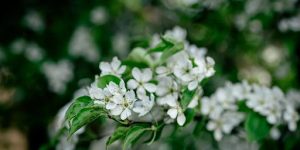
Growing Zones
Bradford pear trees are quite adaptable and can thrive in a wide range of climates. They are generally recommended for USDA Hardiness Zones 4 through 8. This broad range means they can tolerate both colder winters and warmer summers found across much of the United States. Their resilience makes them a popular choice for many different regions.
Soil Conditions
When it comes to soil, Bradford pears are not overly picky. They prefer well-drained soil but can tolerate a variety of soil types, including clay, loam, and sandy soils. While they can grow in less-than-ideal conditions, they perform best in soil that is moderately moist and has a slightly acidic to neutral pH, typically between 6.0 and 7.0. They can also handle a bit of drought once established, but consistent moisture is best for optimal growth and health. It’s worth noting that while they can tolerate some dampness, prolonged waterlogged conditions are not ideal.
Site Selection
Choosing the right spot for your Bradford pear is important for its long-term health and appearance. These trees need full sun to really show off their spring blossoms and develop a strong structure. Aim for a location that receives at least six hours of direct sunlight per day. Also, consider the mature size of the tree. They can grow to be about 20-30 feet tall and 15-25 feet wide, so give them plenty of space away from buildings, power lines, and other trees. Proper spacing helps with air circulation, which can prevent diseases. Remember that the Callery pear, the species from which the Bradford pear originates, is native to parts of Asia and is often planted ornamentally in urban settings.
Planting Considerations
When planting, dig a hole that is two to three times wider than the root ball but no deeper. This allows the roots to spread out easily. Make sure the top of the root ball is level with the surrounding soil. After planting, water the tree thoroughly to settle the soil and remove air pockets. Applying a layer of mulch around the base, keeping it a few inches away from the trunk, will help retain moisture and suppress weeds. This practice is a great way to conserve water for the tree.
Planting Bradford Pear
When you’re ready to plant your Bradford pear tree, picking the right spot is key. These trees can grow quite large, and their branches are known to be a bit brittle, so it’s wise to give them plenty of space. Avoid planting too close to buildings, sidewalks, or power lines. Ideally, choose a location that offers good drainage and receives full sun. When digging the hole, make sure it’s about two to three times wider than the root ball, but no deeper. This allows the roots to spread out easily. Gently loosen the roots if they are tightly bound before placing the tree in the center of the hole. Backfill with the original soil, and water thoroughly to settle the soil and remove air pockets.
Site Selection
- Choose a location away from structures and utility lines. This is important because the tree’s branches can be prone to breaking, especially in storms, and you don’t want them falling on your house or power lines.
- Consider the mature size of the tree. While they might look small when you buy them, Bradford pears can reach heights of 30-50 feet with a similar spread.
- Ensure the planting site has good air circulation. This helps reduce the risk of fungal diseases.
Planting Process
- Dig a hole that is two to three times wider than the tree’s root ball and just as deep. The wider hole encourages root growth.
- Carefully remove the tree from its container. If the roots are circling the pot, gently loosen them with your hands or a small trowel.
- Place the tree in the center of the hole, ensuring the top of the root ball is level with or slightly above the surrounding soil. This prevents the tree from settling too deeply.
- Backfill the hole with the soil you removed, breaking up any large clumps. Avoid adding amendments like compost or fertilizer directly into the planting hole, as this can discourage roots from growing outward.
- Water the tree deeply after planting to help settle the soil and eliminate air pockets. A good soaking is more effective than frequent, shallow watering.
While planting a Bradford pear tree might seem straightforward, remember that their inherent structural weaknesses mean careful placement and ongoing maintenance are necessary for how to care for a Bradford pear tree.
Watering Guidelines
When it comes to keeping your Bradford pear tree healthy and thriving, proper watering is key. These trees, while generally hardy, do have specific needs, especially when they are young and establishing themselves. Getting the watering right from the start sets them up for a long, productive life.
Initial Watering After Planting
Right after you plant your Bradford pear, give it a good, deep soak. This helps settle the soil around the roots and removes any air pockets. Aim to water slowly and thoroughly, allowing the water to penetrate deep into the root zone. For the first few weeks, you’ll want to keep the soil consistently moist, but not waterlogged. Think of it like giving a new plant a good drink to help it get settled.
Established Tree Watering
Once your tree is established, typically after the first year, its watering needs change. Established Bradford pear trees are quite drought-tolerant. However, during prolonged dry spells or heatwaves, they will still benefit from supplemental watering. The best approach is to water deeply and less frequently. This encourages the roots to grow deeper into the soil, making the tree more resilient.
How Much Water?
- Young Trees (First Year): Water deeply about once or twice a week, depending on rainfall and temperature. The soil should feel moist to the touch about an inch or two down.
- Established Trees: Water deeply once every few weeks during dry periods. You can check soil moisture by digging a small hole near the base of the tree; if it’s dry a few inches down, it’s time to water.
Watering Techniques
When you water, focus the water at the base of the tree, directly on the root zone. Avoid overhead watering, as this can promote fungal diseases. Using a soaker hose or a slow-drip irrigation system is ideal. If you’re using a regular hose, let the water run slowly at the base for a good amount of time to ensure deep penetration. A layer of mulch around the base of the tree, keeping it a few inches away from the trunk, will help retain soil moisture and reduce evaporation. This practice is a great way to conserve water for the tree.
Overwatering can be just as harmful as underwatering. It can lead to root rot and other issues. Always check the soil moisture before watering again. It’s better to be a little dry than too wet.
Signs of Watering Issues
- Underwatering: Wilting leaves, yellowing leaves, and leaf drop are common signs. The soil will also be dry and cracked.
- Overwatering: Yellowing leaves, wilting (even when the soil is wet), and soft, mushy roots can indicate overwatering. The soil may stay wet for extended periods.
Remember, consistent, appropriate watering is a cornerstone of good Bradford pear tree care. It supports healthy growth and helps the tree withstand environmental stresses. If you’re looking for information on managing your tree’s wood, consider how Bradford pear wood burns.
Fertilizing for Healthy Growth
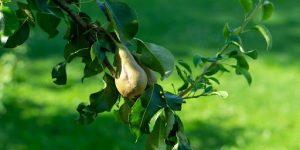
Bradford pear trees generally do not require heavy fertilization. Over-fertilizing can sometimes lead to weaker growth and increased susceptibility to pests and diseases. The key is to provide nutrients when the tree shows signs of deficiency or during its establishment phase. A balanced, slow-release fertilizer is typically best.
When to Fertilize
- Young Trees (First 1-2 Years): Fertilize in early spring as new growth begins. This helps establish a strong root system.
- Mature Trees: Fertilize only if the tree shows signs of nutrient deficiency, such as slow growth, pale leaves, or reduced flowering. This is usually done in early spring.
How to Fertilize
- Choose the Right Fertilizer: Opt for a balanced fertilizer, such as a 10-10-10 or a formula specifically for trees and shrubs. Slow-release options are preferable as they provide nutrients over a longer period.
- Application Area: Spread the fertilizer evenly around the base of the tree, extending out to the drip line (the area directly beneath the outermost branches). Avoid piling fertilizer directly against the trunk.
- Watering: Water the tree thoroughly after applying fertilizer. This helps the nutrients dissolve and move into the soil where the roots can access them.
Fertilizer Amounts
For young trees, a light application is usually sufficient. For mature trees showing deficiency, you can base the amount on the trunk’s diameter. A general guideline is to apply about one pound of 10-10-10 fertilizer for every inch of trunk diameter, spread over the root zone. For example, if your tree’s trunk is 4 inches in diameter, you might apply 4 pounds of fertilizer, spread out under the canopy. Remember, less is often more with Bradford pears.
Over-fertilizing can encourage rapid, weak growth, making the tree more prone to storm damage and disease. It’s better to err on the side of caution and fertilize sparingly, only when necessary.
Signs of Nutrient Deficiency
- Yellowing leaves (chlorosis), especially between the veins.
- Stunted growth or fewer new shoots.
- Poor flowering or leaf production.
If you observe these signs, a soil test can help determine specific nutrient needs. Proper soil preparation and adequate watering are often as important as fertilization for maintaining tree health. If you are considering replanting a tree, ensure the new location has suitable soil conditions to support healthy growth without excessive fertilization.
Pruning Bradford Pear Trees
Pruning is a key part of keeping your Bradford pear tree healthy and looking its best. It helps improve the tree’s structure, encourages new growth, and can even help prevent diseases and pests. Think of it as a regular check-up for your tree.
Why Prune Bradford Pear Trees?
- Improving tree structure: Bradford Pear trees can sometimes grow branches that are weak or cross over each other. Pruning helps get rid of these issues, making the tree stronger and less likely to have branches break off in strong winds. It also helps the tree stand up better overall.
- Promoting new growth: When you trim back branches, it signals the tree to grow new ones. This can lead to a fuller, denser canopy and more blossoms in the spring. It also helps sunlight and air get into the middle of the tree, which is good for its health.
- Preventing disease and pests: Removing any branches that look dead or sick is important. This stops any problems from spreading to the rest of the tree. A well-pruned tree is generally a healthier tree, which means it’s better at fighting off bugs and sickness.
How to Prune
Getting the pruning right involves a few simple steps:
- Get your tools ready: Make sure you have clean, sharp pruning shears, loppers, and maybe a saw. Sharp tools make clean cuts, which heal faster and are less likely to get infected.
- Shape the tree: Start by looking at the overall shape. Take off any branches that are growing into each other or rubbing. Also, remove any dead or diseased branches you see. The goal is to have a balanced shape with an open canopy.
- Remove dead branches: Keep an eye out for deadwood. It doesn’t look good and can be a spot where pests or diseases start. Get rid of it whenever you see it.
- Control growth: If some branches are getting too long or growing too fast, trim them back to keep the tree’s size and shape in check. Just try not to cut off more than about a quarter of the tree’s leaves at one time, as this can stress it out.
When you prune, always aim to make cuts just above a bud or a branch collar. This is the slightly swollen area where a branch meets the trunk or a larger branch. Making cuts here helps the tree heal properly and reduces the risk of problems.
Avoiding Common Pruning Mistakes
It’s easy to make mistakes when pruning, but knowing what to avoid can save your tree a lot of trouble:
- Over-pruning: Cutting off too much at once, sometimes called topping, is bad for the tree. It weakens the branches and can cause weak, unstable growth to sprout. It’s better to trim less and keep the tree’s natural shape.
- Using incorrect pruning techniques: Things like leaving stubs or making jagged cuts can hurt the tree. Always make clean cuts right above the branch collar. This helps the tree heal quickly and lowers the chance of infection.
- Pruning at the wrong time: While you can remove dead or damaged branches anytime, the main pruning is best done when the tree is dormant. This is usually in late winter or early spring. At this time, the tree is less likely to get diseases or pests, and it can heal better. Pruning after it blooms can affect its flowering for the next year, so it’s best to stick to dormant season pruning.
How to Prune
When it comes to pruning your Bradford Pear tree, the goal is to keep it healthy and looking good. It’s not just about making it look neat; proper pruning helps the tree grow stronger and can even help prevent problems down the line. Think of it as giving your tree a little haircut to keep it in shape.
Why Prune Your Bradford Pear Tree?
There are a few good reasons to get out there with your pruners:
- Improving tree structure: Bradford Pear trees can sometimes grow branches that cross or rub against each other. Trimming these out helps prevent branches from breaking, especially when there’s strong wind or heavy snow, and makes the whole tree more stable. It’s like tidying up the tree’s skeleton.
- Promoting new growth: When you prune, you’re encouraging the tree to grow new branches and leaves. This opens up the canopy a bit, letting more sunlight and air get through, which helps the tree produce more leaves and, if it’s a fruiting variety, more blossoms.
- Preventing disease and pests: Cutting off dead or sick branches is a big one. It stops any sickness from spreading to the rest of the tree and also makes the tree tougher against common bugs and diseases. A healthy tree is a more resilient tree.
When to Prune Bradford Pear Trees
The best time to trim your Bradford Pear is when the tree is resting, usually in late winter or early spring, before new growth kicks off. This is when the tree is less likely to catch diseases from pruning cuts, and it can heal up faster. Of course, if you see a branch that’s broken or sick, you should take care of it right away, no matter the season.
How to Prune Bradford Pear Trees
Pruning isn’t complicated, but doing it right makes a difference for your tree’s health and appearance. Here’s a simple way to go about it:
- Get your tools ready: Before you start, make sure you have clean, sharp pruning shears, loppers, and maybe a saw if you have thicker branches. Sharp tools make clean cuts, which heal better.
- Shape the tree: Start by looking at the overall shape. Take off any branches that are growing into each other or rubbing. Also, remove any branches that are dead or look diseased. The idea is to create a balanced and open shape for the canopy.
- Remove dead branches: Go through the tree and find any branches that are dead branches. Deadwood doesn’t look good and can invite pests or diseases.
- Control growth: If you have branches that are getting too long or growing way faster than others, you can trim them back to keep the tree’s size and shape in check. Just try not to cut off more than about a quarter of the tree’s leaves at one time, as this can stress it out.
Common Mistakes to Avoid When Pruning Bradford Pear Trees
Even with the best intentions, some pruning mistakes can hurt your tree. Be mindful of these:
- Over-pruning: Cutting off too much at once, sometimes called topping, is bad for the tree. It can make the structure weak and lead to new branches that aren’t very strong. It’s better to remove only what’s necessary and keep the tree’s natural shape.
- Using wrong cuts: Making cuts that leave stubs or don’t cut cleanly can damage the tree and make it harder to heal. Always make your cuts just above a bud or a branch collar, which is that slightly swollen area where the branch meets the trunk. This helps the tree heal quickly and reduces the chance of infection.
After you’re done pruning, it’s a good idea to keep an eye on your tree. Make sure it’s getting enough water, especially if it’s a dry spell. A little bit of fertilizer in the spring can also help it bounce back and grow strong. Checking for any signs of pests or diseases regularly is also smart.
Remember, the goal is to help your tree thrive, not to reshape it into something it’s not. For more detailed advice on annual pruning for fruit trees, you might find additional resources helpful.
Avoiding Common Pruning Mistakes
When you’re working on your Bradford pear tree, it’s easy to make a few missteps with pruning. One big thing to watch out for is cutting too much at once. Taking off more than a quarter of the tree’s leaves and branches in a single session can really stress it out. It’s better to do a little bit each year than to try and reshape the whole tree in one go. Also, avoid that practice called ‘topping,’ where you just cut off the top of the tree. It makes the tree grow weak, spindly branches that don’t hold up well and can break easily.
Another common error is using the wrong tools or cutting in the wrong spot. You want to make clean cuts right next to the branch collar, which is that slightly swollen bit where the branch meets the trunk. This helps the tree heal up faster and keeps sickness away. Using dull saws or just hacking at branches can cause damage that takes a long time to fix, if it ever does.
What to Do After Pruning
After you’ve done your pruning, give the tree a good drink of water, especially if it’s dry out. You can also add some slow-release fertilizer in the spring to help it get the nutrients it needs for new growth. Keep an eye on the leaves and branches for any signs of bugs or sickness. If you see anything weird, like spots on the leaves or branches that look sick, it’s a good idea to ask an expert what’s going on.
Common Pruning Mistakes to Avoid
- Over-pruning: Cutting off too much foliage at one time can weaken the tree’s structure and make it more susceptible to disease and pests. Aim to remove only what’s necessary to maintain shape and health.
- Topping: This involves cutting off the main leader or large branches indiscriminately. It results in weak, fast-growing shoots that are prone to breaking and creates an unnatural shape.
- Incorrect Cuts: Making cuts that are too close to the trunk or leaving stubs can impede healing and invite disease. Always cut just outside the branch collar.
It’s important to remember that pruning is about guiding the tree’s growth, not forcing it into an unnatural shape. Think of it as a gentle touch rather than a drastic makeover.
Monitoring Leaf Health
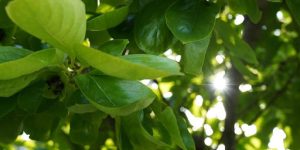
Keeping an eye on your Bradford pear tree’s leaves is a straightforward way to tell if it’s happy and healthy. Most of the time, these trees are pretty low-maintenance, but sometimes things can go wrong with the leaves. You might see yellowing, spots, or even leaves dropping off way too early.
Common Leaf Issues
- Leaf Scorch: This shows up as browning or wilting along the edges of the leaves, especially during dry spells. It’s often due to not enough water or too much sun.
- Powdery Mildew: You’ll notice a white, powdery coating on the leaves. This is a fungus that likes humid conditions and can make the leaves look pretty bad.
- Aphids: These tiny bugs can cluster on new growth and the undersides of leaves, sucking out sap. They can cause leaves to curl or turn yellow.
- Leaf Spot Diseases: Various fungi can cause spots of different colors and sizes on the leaves. If it gets bad, the leaves might turn yellow and fall off.
What to Look For
Regularly inspect the leaves for any changes in color, texture, or shape. It’s also a good idea to check the undersides of the leaves and where the leaves attach to the branches. Early detection is key to dealing with any problems before they get out of hand. If you notice a lot of leaves turning yellow or developing spots, it’s time to investigate further. Sometimes, a simple change in watering or a bit of pruning can fix things right up. For more serious issues, you might need to look into plant health care options.
Pay attention to the overall appearance of the foliage. A healthy tree will have vibrant green leaves that are evenly distributed. Any significant deviation from this can be an early warning sign.
Preventing & Managing Disease
Bradford Pear trees, while pretty, can be prone to a few issues that you’ll want to keep an eye on. Staying ahead of these problems means your tree will look better and live longer.
Fire Blight
This is a bacterial disease that can really mess up your tree. You’ll see blackened leaves and twigs, and sometimes a slimy, oozy substance on the bark. It spreads fast, especially in warm, wet weather. The best way to handle it is to prune out any affected branches. Make sure you cut back into healthy wood, and clean your pruning tools after each cut. This helps stop the bacteria from spreading. It’s also a good idea to avoid pruning during the growing season when the disease is active. Some varieties are more resistant, so if you’re planting new trees, look into those.
Fungal Leaf Spot
These show up as spots on the leaves, often with a yellow halo. They’re usually not a death sentence for the tree, but they can make it look pretty rough. Good air circulation is key here. Make sure your tree isn’t too crowded, and keep the area around the base clear of debris. If you see a lot of leaf spot, you might consider a fungicide, but often, just cleaning up fallen leaves in the fall is enough to prevent it next year. Proper pruning can also help improve airflow within the canopy.
Canker Diseases
Cankers are like dead spots on the branches or trunk. They can be caused by various fungi or bacteria. You’ll see sunken areas, sometimes with cracked or discolored bark. If you spot a canker, prune the affected branch well back into healthy wood. Again, clean your tools. It’s also important to keep your tree healthy overall, as stressed trees are more susceptible to cankers. Good watering and feeding practices help.
Pest Issues
While not as common as diseases, Bradford Pears can sometimes get aphids or borers. Aphids are tiny insects that cluster on new growth, sucking sap. You might see sticky honeydew and sooty mold. Often, a strong blast of water from the hose can knock them off. For more serious infestations, insecticidal soap or neem oil can work. Borers are trickier; they tunnel into the wood. If you see small holes in the bark with sawdust-like frass, you might have borers. It’s hard to treat them once they’re inside, so prevention is key. Keeping the tree healthy and avoiding wounding the bark can help.
It’s always a good idea to regularly inspect your tree. Catching problems early makes them much easier to manage. Think of it like a quick check-up for your tree’s health.
Controlling Invasive Spread & Self‑Sown Seedlings
Bradford pear trees, while initially popular for their spring blossoms and upright form, have a significant downside: their tendency to spread invasively. These trees are notorious for producing fertile seeds that can escape your yard and establish themselves in natural areas, outcompeting native plants. It’s important to manage their spread to protect local ecosystems.
Understanding Invasiveness
The Bradford pear is classified as an invasive species in many regions. This means it can naturalize and spread aggressively outside of cultivated areas. The tree produces abundant fruit that is readily dispersed by birds, leading to new seedlings popping up in forests, fields, and along roadsides. This uncontrolled growth can disrupt natural habitats and reduce biodiversity.
Identifying Self-Sown Seedlings
Spotting these unwanted seedlings early is key to controlling their spread. Look for small trees that resemble the parent Bradford pear, often appearing in your lawn, garden beds, or even in nearby wild areas. They typically have the same lobed leaves and can grow quite rapidly.
Methods for Control
Controlling the spread of Bradford pear involves a multi-pronged approach:
- Manual Removal: For young seedlings, simply pulling them out by the roots is often effective. Ensure you remove the entire root system to prevent regrowth.
- Cutting and Treatment: For larger saplings or established trees that have self-seeded, cutting them down and immediately applying a targeted herbicide to the stump can prevent resprouting. Always follow herbicide instructions carefully.
- Preventing Seed Production: If you have a Bradford pear tree, consider pruning off the flower clusters before they develop into fruit. This significantly reduces the number of seeds that can be dispersed.
- Monitoring: Regularly check your property and surrounding areas for new seedlings and remove them promptly. Early intervention is the most effective strategy.
Many states are now taking action to ban the sale and planting of Bradford pear trees due to their invasive nature. It’s wise to check with your local extension office to understand the regulations in your area and consider eco-friendly alternatives if you are planning new plantings.
Managing Existing Trees
If you have a mature Bradford pear that is showing signs of spreading, you might need to consider its removal. While pruning can help manage its shape and health, it won’t stop the production of seeds. For homeowners looking to manage the spread of the Bradford pear, AI technology is being explored as a tool to help manage the spread.
When to Remove or Replace
Sometimes, despite our best efforts, a Bradford pear tree just isn’t working out. You might consider removing it if it’s showing signs of serious decline, like a lack of blooming after years of flowering, or if leaves are consistently browning and falling off prematurely. These could indicate underlying issues with water uptake or nutrient absorption that are beyond simple fixes. Another reason to remove one is if it’s become overly aggressive, out-competing native plants in your yard or neighborhood, which is a common problem with this species.
Removing a Mature Tree
If you decide removal is the best course of action, especially for a larger tree, here’s a general idea of what’s involved:
- Always wear protective eyewear to keep your eyes safe from debris.
- Use a chainsaw to cut the tree down, aiming to cut about six inches from the ground.
- Apply a herbicide to the remaining stump and the exposed roots to help prevent regrowth.
- Dig around the stump in a circle about three feet wide to expose the main root system.
- Use a shovel to remove the main root ball once it’s accessible.
If you’re not comfortable tackling this yourself, it’s always a good idea to hire a professional tree removal service. They have the right equipment and experience to do the job safely and efficiently.
When to Consider Replacement
If your Bradford pear is unhealthy, invasive, or simply not what you want in your landscape anymore, it might be time to think about replacing it. Choosing a native or non-invasive alternative can benefit your local ecosystem.
Replacing an invasive species like the Bradford pear with a native tree can significantly help local wildlife and reduce the spread of unwanted plants. Native trees are adapted to the local climate and soil, requiring less maintenance and providing better habitat and food sources for birds and insects.
Eco‑Friendly Alternatives to Bradford Pear Trees
While the Bradford pear tree offers a showy spring bloom, its tendency to spread invasively and its brittle branches often lead homeowners to seek more sustainable options. Fortunately, many beautiful native trees provide similar aesthetic benefits without the environmental drawbacks. Choosing native alternatives supports local ecosystems and often requires less maintenance once established.
Native Trees with Spring Blooms
Several native trees offer stunning white flowers in the spring, mirroring the Bradford pear’s appeal. Consider these options:
- Serviceberry (Amelanchier spp.): This multi-stemmed shrub or small tree provides delicate white flowers in early spring, followed by edible berries that attract birds. It also offers attractive fall color.
- Flowering Dogwood (Cornus florida): A classic choice, the dogwood displays large, showy white bracts (often mistaken for petals) in spring. It’s a beautiful understory tree that also provides red berries for wildlife and good fall foliage.
- Eastern Redbud (Cercis canadensis): Known for its vibrant pinkish-purple flowers that bloom directly on the branches and trunk before the leaves emerge, the redbud is a striking addition to any landscape.
Trees with Good Fall Color
If fall color is a priority, these trees are excellent choices:
- Sugar Maple (Acer saccharum): Famous for its brilliant red, orange, and yellow fall foliage, the sugar maple is a stately tree that also provides shade.
- Black Gum (Nyssa sylvatica): This tree offers glossy green leaves that turn a spectacular scarlet or crimson in the fall. It’s also quite adaptable to various soil conditions.
- Oak Trees (Quercus spp.): Many oak species, such as the Scarlet Oak (Quercus coccinea) or Pin Oak (Quercus palustris), provide excellent fall color ranging from russet to reddish-brown.
Trees Known for Strong Structure
Unlike the Bradford pear, which is prone to splitting, these trees have a more robust structure:
- Hickory (Carya spp.): These trees are known for their strength and longevity, offering good shade and attractive compound leaves. Some varieties also produce edible nuts.
- American Hornbeam (Carpinus caroliniana): Also known as Blue Beech or Musclewood, this small to medium-sized tree has smooth, gray bark and a strong, upright form. It provides subtle fall color.
- Kentucky Coffeetree (Gymnocladus dioicus): This tree has a unique, open structure and large, compound leaves that create a tropical feel. It’s very hardy and has good resistance to pests and diseases.
When considering replacements, it’s always a good idea to check with your local extension office or a certified arborist. They can provide recommendations tailored to your specific climate and soil conditions, helping you select the best native trees for your yard. Making informed choices ensures your landscape thrives while supporting the local environment.
Looking for a better tree for your yard than the Bradford pear? We can help you find beautiful and more suitable options. These trees can cause problems, but many great alternatives look fantastic and are better for the environment. Discovering the right tree is easy. Visit our website to learn more about great tree choices and get expert advice.
Frequently Asked Questions
When is the best time to plant a Bradford Pear tree?
Bradford Pear trees are best planted in the dormant season, usually in late winter or early spring. This timing helps the tree heal faster and reduces the risk of diseases. However, if you see any branches that are dead or damaged, it’s important to remove them right away, no matter the season.
Why is trimming Bradford Pear trees important?
To keep your Bradford Pear tree healthy and looking good, it’s important to trim it regularly. Trimming helps the tree grow better, improves its shape, and stops bugs and sickness from taking over.
What are the basic steps for trimming a Bradford Pear tree?
When trimming, make sure your tools are clean and sharp. Start by shaping the tree’s overall look, removing any branches that cross or rub together, and getting rid of dead or sick branches. Keep the middle of the tree open and balanced.
What is a common mistake to avoid when trimming Bradford Pear trees?
A common mistake is trimming too much, which is also called topping. This can make the tree weak and cause unstable branches to grow. It’s best to avoid cutting off more than you need to and try to keep the tree’s natural shape.
How should I care for my Bradford Pear tree after trimming?
After trimming, make sure to water the tree well. Give it a good soaking, but don’t water too often; let the soil dry out a bit between waterings. You can also add a slow-release fertilizer in the early spring to give it the nutrients it needs to grow.
How can I monitor my Bradford Pear tree for health issues?
Keep an eye on your tree for any signs of pests or sickness, like leaves changing color, wilting, or unusual growth. If you notice any problems, it’s a good idea to ask an expert, like an arborist or horticulturist, for help.
What is the typical lifespan of a Bradford Pear tree?
Bradford Pear trees are known to have a shorter lifespan, typically lasting about 15 to 25 years. They can also be prone to breaking in strong winds or storms due to their structure.
What are some good alternatives to Bradford Pear trees?
If you’re looking for alternatives, consider trees like the white dogwood or serviceberry. These trees are often stronger, last longer, and can be a better choice for your landscape.

